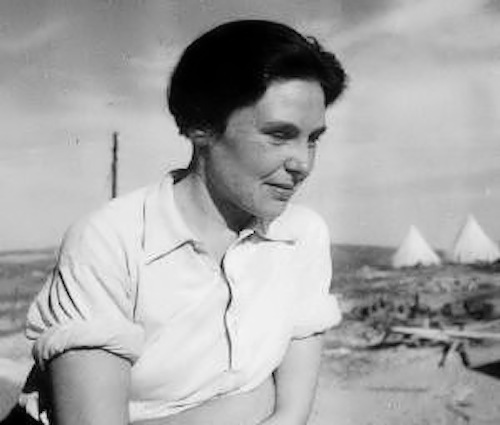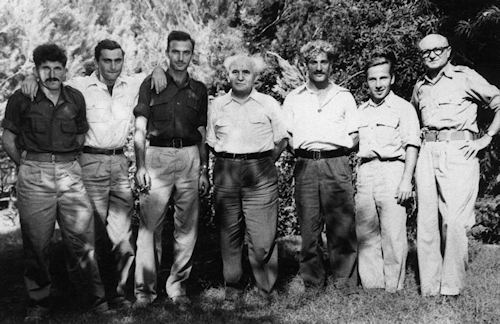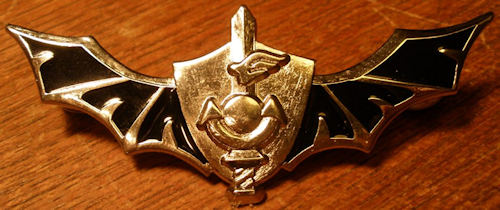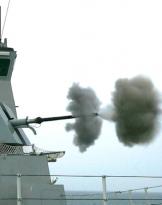With the end of the Second World War, starting from 1946, the agents of the Mossad in Italy, making use of the men of the Payam, did everything to recover equipment that belonged to Xª MAS to be used for their naval sabotage missions.
In June 1946 there was a first meeting between the representative of the Zionist organization in Italy Ada Seréni and the vessel captain Agostino Calosi, head of the Secret Information Service (SIS) of the Navy, the same officer who had commandant Borghese taken at the end of the war, so that he could be tried and not executed.
A woman in charge
Ada Seréni, born Ascarelli, was an important exponent of the Zionist movement in Italy.
Romana, daughter of a rich family of merchants, she married Enzo Seréni, agent of theHaganah, and was one of the first Italian Jews to emigrate to Palestine in 1928, to build the dream of a new land of Israel (Erez Israel).
 Back in Italy in 1945, in search of her husband who had enlisted in the Jewish brigades organized in 44 to help Jews persecuted by Nazi-fascism, she came into contact with theAliah Bet, which, as we have seen inprevious article, was engaged in the clandestine transfer of Holocaust survivors to the promised land.
Back in Italy in 1945, in search of her husband who had enlisted in the Jewish brigades organized in 44 to help Jews persecuted by Nazi-fascism, she came into contact with theAliah Bet, which, as we have seen inprevious article, was engaged in the clandestine transfer of Holocaust survivors to the promised land.
Being of a good family, he was at home in many Roman salons, and soon became responsible for the foreign branch in Italy of the Mossad.
Israel needed weapons and men to pursue its project and Ada Sereni went to the Navy General Staff to ask for help.
Mindful of the previous relations between the Zionists and the Italian Royal Navy, he asked for navy personnel to lead the refugee boats bound for Palestine and instructors for commando training to be employed in sabotage actions both on land and at sea against the Arabs and the British, a field where the Italians had been masters during the war.
Who if not the veterans of the assault vehicles of the former Xª MAS?
After having obtained the consent of the superior authorities, the commander Calosi ordered the captain of the naval engineers Nino Buttazzoni, a former commander of the parachute swimmers battalion, to search for the most suitable personnel to send to Israel.
 Buttazzoni (photo), who had distinguished himself in the defense of the north-eastern borders from the Tito gangs, had left the service after the war and had become the director of Micoperi, a company famous for its underwater activities especially in the oil field. In 1986 the company launched the "Micoperi 7000", a factory ship of 150.000 tonnage, which he actually designed.
Buttazzoni (photo), who had distinguished himself in the defense of the north-eastern borders from the Tito gangs, had left the service after the war and had become the director of Micoperi, a company famous for its underwater activities especially in the oil field. In 1986 the company launched the "Micoperi 7000", a factory ship of 150.000 tonnage, which he actually designed.
A delicate assignment for obvious political reasons: the Zionist movements were in open conflict with Great Britain which was however a western ally in what would soon become the cold war against the Soviet Union.
Obviously, the personnel still in service could not be employed and therefore the "unofficial" path was decided, i.e. the use of ex soldiers from the assault departments of the Regia Marina, both of the Xª MAS and of MARIASSALTO. Some accepted, including Captain Geo Calderoni, a former member of the parachute swimmers battalion, and Lieutenant Nicola Conte, SLC operator, who would have instructed the underwater assaulters.
The third class chief Fiorenzo Capriotti, a former pilot of small explosive boats (MTM-Motoscafi Turismo Modificati), offered himself as instructor of the surface assault vehicles. These fast surface craft had achieved their first success at Souda by sinking the cruiser Y and the oil tanker Pericles. Capriotti had participated, unsuccessfully, in the tragic night in Malta, where many men of the Xª MAS perished.
Of the three characters mentioned above, Fiorenzo Capriotti was a fundamental element for the creation of the "Shayetet 13" or "Thirteenth Flotilla".
Introduced to Mrs. Ada Sereni, Capriotti quickly reached an agreement to instruct a group of operators in Israel in the use of explosive boats, the same ones that had been employed by the X^ MAS.
Now we had to find the means
In this continuous information research activity, a commander of the Payam, Volodia Izkovitz. who had served during the war in the Royal Navy, found an old MTM (Motoscafo Turismo Modificato- Barchino Explosivo) in Livorno. Mindful of her effectiveness, she began a difficult search to get to the construction company, which turned out to be CABI Cattaneo of Milan.

In 1948, Izkovitz went personally to Milan and met the owner of the company, Eng. Giustino Cattaneo, in a particular moment. In fact, the engineer was on his way to court to hand over the company's accounting books to file for bankruptcy.
The meeting was decidedly providential and Izkovitz proposed the purchase of 30 small boats in three lots and spare parts, allowing the company to invoice a sum of around 50 million lire in a short period so as to resume both production and design.
The arrival in Israel
Meanwhile, Capriotti arrived in Haifa in June 1948, as a Jew from Romania and with a visa made out to "Mister Katz". It was later presented to the 12 boys, coming from Palmac and Palyam, who then formed the first group of MTM assault pilots. Yohay Fisher, later Yohaj Ben Nun, assumed its leadership, a position that led him, subsequently, in 1960 until 1966, to hold the position of Chief of Staff of the Israeli Navy.
In the month of July 1948 the means of the first batch of the CABI began to arrive in Cesarea. Thus a special group of the Navy called B 10 was born. Subsequently, for training, the Sea of Galilee (Lake Tiberias) was preferred to the Mediterranean Sea, where intense day and night training began.

The corvette was assigned for the operational approach of the punts to the target Ma'oz (photo) equipped with special lifting equipment and four saddles for the MTMs.
In early October 1948, during the Arab-Israeli War, the vehicles were armed and on 22 October three MTMs plus a recovery vehicle (small boat equipped for the recovery of operators) were embarked on the approaching ship. The operation was in contrast to the Egyptian navy which was preparing to supply its troops encircled in Gaza.
At two o'clock in the morning on October 23, Capriotti was awakened and brought back on board the Ma'oz and immediately noticed that the four vehicles were no longer present.
The first action had been carried out, that of Gaza, with the sinking of the Egyptian flagship "Emir Farouk" and of a minesweeper.
This mission was strategically important because it freed the Israeli coast from the pressure of the Egyptian Navy and allowed the army to conquer the Gaza strip.
The following pilots participated in the operation:

Yohai BEN NUN – team leader who sank the minesweeper;
Zalman ABRAMOV – struck theEl Emir Farouk;
Yakov VARDI – missed the attack, repeated it by hitting theEl Emir Farouk.
Two other pilots, Itzhak BROCKMAN and Yakov REITOV, aboard the recovery vehicle, first fished Yohay and then the other two to then head to the Ma'oz.
The Israeli Navy stormtrooper unit that sank the Egyptian flagship “Emir Farouk” near Gaza. From left to right: Zalman Abramov, Yohai Bin-Nun (Commander), Ya'akov Reitov, David Ben-Gurion (Prime Minister), Ya'akov Vardi, Yitzhak Brockman, Ya'akov Dori (Chief of Staff).
October 22nd is still an important date in the Israeli navy and it has become theirs Navy Day.
The political consequences
Italy, in particular the Italian Navy, after the action of the Israeli small boats, received heavy complaints from the British Government which, from the remains of the vessels recovered at sea, immediately understood their origin. This resulted in the blocking of the possibility of purchasing military ships built in Italy for the Israelis (this did not prevent the British from taking the opportunity to sell to the Israelis one of their destroyers, class Z, launched in 1944).
The search for underwater vehicles did not bear fruit: the few vehicles (they could be counted on two hands) had been requisitioned by the Allies or secretly kept for shorter times.

Lacking underwater means to be found on the market, Capriotti, with the help of Isacar Haimovich, head of the Economic Commission of the Israeli Embassy in Rome, organized a technical study in Lugano with the participation of Eng. Guido Cattaneo, son of Giustino Cattaneo, founder of the CABI Cattaneo company in Milan.
Eng. Guido Cattaneo had a military background, as a complement officer of the Naval Arms at the Xª MAS, and had been part of the Moccagatta column which from June 1942 to March 1943 had operated in the Black Sea with means of design and construction by CABI Cattaneo: five MTM and five MTSM (Motoscafi Turismo Siluranti Modificati).
Furthermore, he had followed the construction of the 100 series and subsequently of the SLC (Siluri Lunga Corsa), having participated with the major of naval weapons Mario Masciulli, designer of the SSB (Siluro San Bartolomeo), in the implementation of the first vehicle. The first projects, developed in 1950, were built in Milan and then, in 1951, all the components necessary for the assembly of a certain number of vehicles were shipped which, at the beginning of 1952, were assembled and tested in Israel.
The operators of these underwater vehicles began to be trained since 1949 by Nicola Conte who, as a consultant, supported the commander of the new underwater group, Yossef Yossele Dror, coming from the "Underwater Sabotage Teams". After the end of the Arab-Israeli war, on July 20, 1949, the surface Department, B 10, was merged with the underwater one and the "Shayetet 13" was born.

The experiences gained in Israel, which at that time could not be done in Italy (due to post-war limitations), allowed the CABI Cattaneo company to return to work for the Italian Navy, above all with new ideas.
In 1952, when the Navy requested the design and construction of new vessels, the starting point for the new vessels were the vessels built for the Israelis, as can be seen by comparing the vessel exhibited in the Haifa museum and the vessel called "C" built by CABI Cattaneo in 1954. now exhibited in the Sala Storica del Varignano.
The silent people
Shayetet 13, also known as S-13 or "the people of silence", is today a commando unit of the Israeli Navy that operates at sea, on land and in the air. Even today its members and the details of many of their operations remain a secret. Since its creation it has operated during all the wars waged by Israel, with the task of advanced reconnaissance, infiltration and sabotage. From the Lebanon war in the early 80s to the Palestinian war from 2000 to 2005, Shayetet soldiers took part in various ground operations against Palestinian terrorist infrastructure in both Gaza and the West Bank.
Members of the unit were also used in the Battle of Jenin during Operation Defensive Shield in 2002. Since 2000, the unit has successfully captured vessels attempting to smuggle weapons to Palestinian terrorists. These ships, the Karine A, Santorini, Abu-Yusuf, Franco p, Victoria and Klos C, were all heavily loaded with tons of advanced weapons and missiles that would be used to attack Israel. During the Second Lebanon War in 2006, Shayetet operated hundreds of miles behind enemy lines in the Hezbollah stronghold city of Tire targeting the rocket launch net against Israel.
 A curiosity
A curiosity
The drive name is Shayetet 13 where "Shayetet" is the Hebrew word for "flotilla" and 13 is its number, thus thirteenth flotilla. A number not chosen at random but which referred to the fact that the first members of the unit met every 13th of a month, to commemorate their action with one of the survivors.
Shayetet 13 it is considered one of the best trained special operations units in the world and still today it recognizes, with a certain pride, its matrix in those men of the former Italian Royal Navy.
Read: "The secret relations between the Zionist groups and the Italian Royal Navy (part I/3)"
Read: "The secret relations between the Zionist groups and the Italian Navy (part 2/3)"
Sources
Eliezer Ta, The Palyam: Servant and Samurai of Aliya Bet
Capriotti Fiorenzo, Diary of a Fascist at the Court of Jerusalem, 1948 - 2002
The Varignano and its historic hall, Varignano, 2005
WikipediaLino Mancini, The Italian contribution in the birth of the Israeli Navy - The Italian contribution in the birth of the Israeli Navy (altomareblu.com)
Yehuda Ben-tzur & Tzvi Ben-tzur, The Palyam – The Palmach's Maritime Company The Palyam
Photo: web / Gil Nechushtan
(article originally published on https://www.ocean4future.org)












